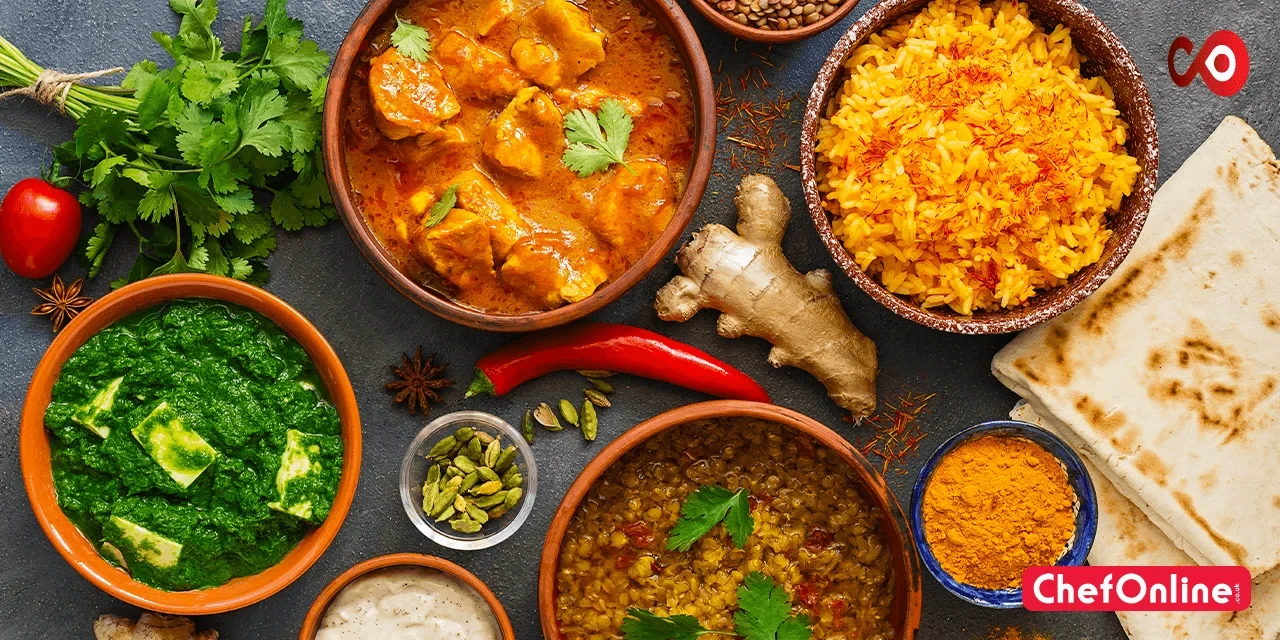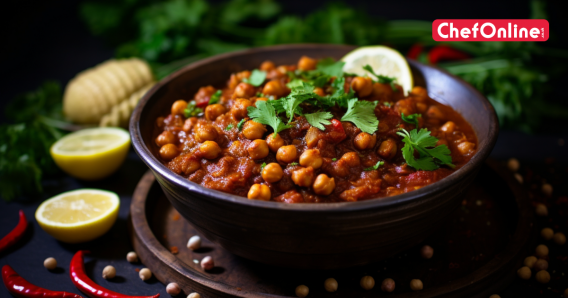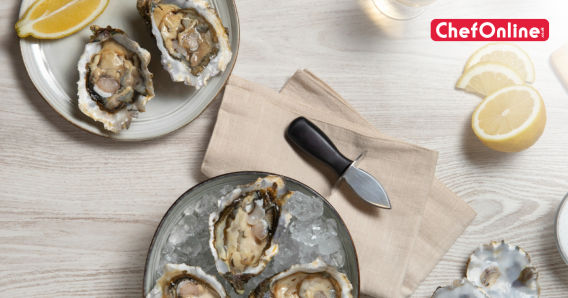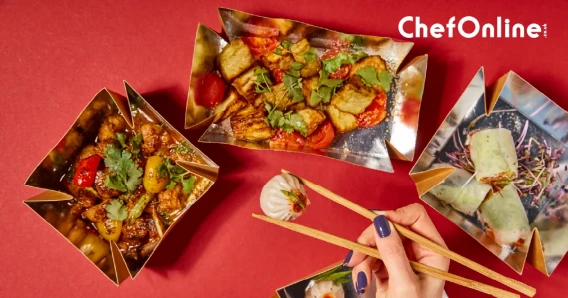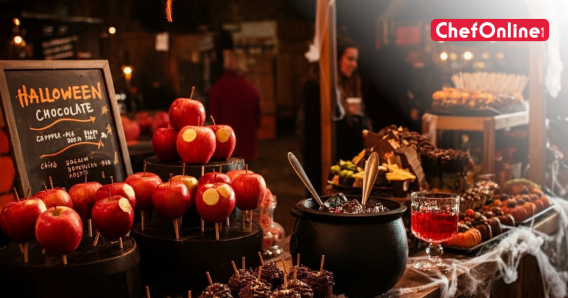There’s a special feeling that can’t quite be described when stepping into a curry house. The warm aroma of spices fills the air, promising comforting meals and flavourful experiences.
But when you’re staring at a long menu or planning to cook at home; how do you know what to choose? With hundreds of Indian dishes and regional cuisines, it can be overwhelming.
This ultimate guide to Indian cuisine will help you understand traditional Indian food, learn how to describe the flavours, and discover both authentic dishes from India and the most popular Indian meals in the UK.
What is Traditional Indian Food?
When people in England think of Indian food, they often imagine creamy curries like Chicken Tikka Masala. While tasty, these are usually adapted recipes created to suit British spice preferences. In fact, Chicken Tikka Masala is more of a British invention than a traditional Indian dish.
Authentic Indian cuisine looks a little different. It’s based on recipes passed down through generations, often less creamy, more spice-driven, and eaten with rice, lentils, and breads. Traditional Indian meals are also designed to be filling, using flours, pulses, and vegetables.
Examples of traditional dishes of India include:
-
Masala Dosa – a savoury rice and lentil pancake stuffed with spiced potatoes.
-
Dal Tadka – yellow lentils tempered with garlic, cumin, and mustard seeds.
-
Chapati & Roti – soft flatbreads used to scoop up curries and stews.
What Are the Different Regional Cuisines in India?
As we metaphorically travel around India, we uncover a whole range of cuisines that vary in flavour palette, spice levels, and common ingredients.
It isn’t as simple as pinning specific recipes to different regions, but there are preferred feature foods that individual areas are known for. Examples of these include:
- Rich curries hailing from Northern India.
- Pastry snacks like samosas being served on the regular in New Dehli.
- Hearty dishes based around rice, lentils, and stew from South India.
- Sweet dumplings fried and freshly made in Kerala.
- Meat-heavy ingredients packing curries and pastries alike in Jammu and Kashmir.
- Vegetarian and seafood meals in Gujarat, where they practise the religion Jainism.
- Wide varieties of street food are served in Mumbai, to locals and tourists alike.
This creates a complex variety of dishes that cover what Indian truly food is.
Where Can I Get Authentic Indian Food?
Although common perceptions would have you believe that local restaurants only serve Anglicised curries, that’s simply not the case. You can enjoy authentic food from around India in the comfort of your own home - you just have to take your time and research different Indian takeaways.
How Would You Describe Indian Food?
Indian food descriptions range from silky and smooth with a gentle warming sensation right through to an explosion of flavour with a fiery after-kick. It’s usually bright and colourful and can easily overwhelm the senses with a strong aromatic smell.
Be very aware of your likes and dislikes when ordering Indian food, but prepare yourself for a delightful experience no matter what dish you pick. The range of ingredients and spices means that no two recipes are remotely similar, and the variety of the cuisine is what makes ordering Indian food so appealing.
Plus, there’s one thing all guides to Indian food would agree on: it’s impossible to get bored. Knowing “What is Indian food?” and understanding the differences between various dishes will guarantee a long future of fun and interesting meals.
What is Special About Indian Food?
Indian food is the perfect multi-functional option for a range of events; such as small family gatherings or special occasions hosting hundreds. When you only order the Indian food basics there’s still a wide variety of options for a range of tastes and requirements.
Even picky children will likely love garlic-topped naan bread and plain tandoori chicken.
Additionally, vegan dishes can accommodate vegetarians and dairy allergens, and there are even some curries suitable for coeliacs. As a result of its wide-ranging scope, Indian food has become a beloved meal in England; claiming 2nd place in UK takeaway popularity over fish and chips. It is tasty, healthy, and brings lots of flavour to a family growing bored of chicken nuggets.
What Are the Types of Indian Food?
It might surprise you that there are countless types of Indian food, ranging from hearty main courses to irresistible street snacks and indulgent Indian desserts. In fact, even the word “curry” has different meanings depending on which part of India you visit. For some, it refers to a gravy-based dish; for others, it simply means a spiced preparation.
When exploring Indian cuisines, you’ll find an extraordinary mix of flavours and textures. The country’s vast geography and cultural diversity have produced a food culture that’s as colourful as it is complex. Here’s an overview of the major categories you’ll encounter:
1. Curries and Stews
Curries are perhaps the most recognised element of Indian cuisine food, but they are incredibly varied. From the creamy butter chicken of the north to the tangy fish curries of Kerala in the south, curries can be mild, medium, or fiery hot. Many are cooked with base ingredients like onion, tomato, ginger, garlic, and a blend of ground spices.
2. Rice Dishes
Rice is a staple across India, but it takes different forms depending on the region. Fragrant biryani, vegetable pulao, lemon rice, curd rice, and tamarind rice all highlight how versatile rice is in traditional Indian meals.
3. Flatbreads
No Indian meal feels complete without bread. From pillowy naan and layered parathas to simple chapati and crispy papad, these breads are perfect for scooping up curries and gravies.
4. Snacks and Street Food
Indian street food is a cuisine in itself. Crispy samosas, tangy chaats, spicy pakoras, and refreshing pani puri are everyday favourites enjoyed across the country. Each region boasts its own specialties, making street food an essential part of experiencing authentic Indian cuisine.
5. Grilled & Tandoori Dishes
The use of the clay oven, or tandoor, gives Indian cooking its signature smoky flavour. Tandoori chicken, seekh kebabs, and paneer tikka are classic dishes cooked this way — perfect for those who enjoy flame-grilled, spiced food.
6. Lentil and Pulse-Based Meals
Lentils (known as dal) are a cornerstone of Indian traditional food. Dishes like dal makhani, sambar, and chana masala provide both protein and comfort, making them a daily part of Indian meals.
7. Desserts and Sweets
India is famous for its wide variety of sweets, known as mithai. From syrup-soaked gulab jamun to milk-based rasgulla and carrot-rich gajar ka halwa, Indian desserts are often rich, festive, and deeply tied to cultural celebrations.
Common Spices in Indian Cooking
Though the dishes are diverse, many share a common base of aromatic spices and flavourings, including:
-
Ginger – adds warmth and freshness
-
Cumin – earthy and nutty
-
Coriander – citrusy and aromatic
-
Paprika – adds colour and mild heat
-
Turmeric – golden spice with health benefits
-
Cayenne – for fiery heat
-
Yoghurt – balances spice with creaminess
These ingredients are used in countless combinations, which is why no two Indian food dishes taste the same.
Is Indian Food Healthy?
Traditional Indian cooking often uses vegetables, lentils, and spices that are high in nutrients. Ingredients like broccoli, cauliflower, okra, and spinach add vitamins, while spices such as turmeric and ginger have anti-inflammatory properties.
Healthier choices include:
-
Tandoori dishes (grilled, not fried).
-
Vegetable curries with less cream.
-
Coconut milk-based curries instead of butter-heavy ones.
So yes — when prepared authentically, Indian traditional food can be very healthy.
Popular Indian Dishes in the UK
In the UK, Indian food has grown into a £3.2 billion industry. While classic Indian dishes like naan, samosas, and poppadoms are household names, here are some authentic and popular meals worth trying:
-
Chicken Makhni (Butter Chicken) – creamy tomato curry with tender chicken.
-
Saag Paneer – spinach and cottage cheese cooked with spices.
-
Aloo Gobi – potato and cauliflower curry with turmeric.
-
Madras Curry – fiery, tangy curry often made with beef or lamb.
-
Masala Dosa – a South Indian pancake stuffed with potatoes.
-
Gajar ka Halwa – carrot-based sweet dessert.
-
Gulab Jamun – fried milk-solid dumplings soaked in syrup.
These are some of the best Indian dishes that bridge tradition and popularity
How is Indian Food Served?
Traditionally, Indian food would be served in large metal dishes to then be scooped out and eaten with your fingers. In a restaurant, though, you’ll be provided with standard forks and cutlery and can eat in whichever way you feel is most comfortable.
The best way to order Indian food is to select a variety of dishes that will be put in the middle of the table to share - that way you get to try as many things as possible whilst making a sustaining meal for everyone. If you’re eating alone and ordering a takeaway, Indian food will be served in plastic containers that you can put in the fridge for tomorrow - so get as much as you want!
What’s a Simple Recipe for an Indian Dish?
Home-cooking is often celebrated because of the freshness of the ingredients, and the satisfaction of making something by hand. However, a lot of Indian dishes require extensive utensils and a specific oven called a tandoor. It can be quite intimidating for those just getting into the world of cooking, but there are a lot of great dishes when looking to make Indian food for beginners.
To get a full range of food, you may need to go to a restaurant or order a takeaway - but here’s one simple recipe from Delish that you can try:
Directions:
- Season chopped beef meat generously with salt and pepper.
- In a large skillet over medium-high heat, heat oil.
- Add beef and cook, flipping once, until deeply golden, roughly 3 to 5 minutes per side.
- Transfer to a plate.
- Add onion to skillet and cook until soft, about 5 minutes.
- Add garlic, ginger, and spices (cayenne, cinnamon and curry pepper) and cook until fragrant, 1 minute.
- Add coconut milk and bring to a simmer.
- Lower heat to low, add beef, and continue to simmer until fork-tender, about 1 1/2 hours.
- Serve with yoghurt, naan, and lime wedges.
How Can I Eat Indian Food Locally?
There are three options available to you, depending on your budget and time constraints. You can:
- Order a takeaway to pick up or be delivered.
- Book yourself and your loved ones into a nearby restaurant.
- Prepare your kitchen and get cooking.
Due to ease and convenience, many Indian food fanatics prefer to get authentic dishes from the source: family-owned local eateries that serve high-quality and delicious meals.
Through ChefOnline, you can browse through several restaurants to find tasty cuisines in your area - allowing you to easily order your favourite dishes. Before deciding, ask yourself the following questions:
- How hungry are you?
- What level of spice do you like?
- Do you prefer sweet or savoury food?
- Are there any dietary requirements to be mindful of?
Sign up to our website or app to find your next evening meal.
Final Thoughts
Indian food is more than just curry — it’s a tapestry of regional cuisines, authentic recipes, and traditional meals that vary from state to state. Whether you’re exploring classic Indian dishes, learning about traditional Indian cooking, or simply searching for the best Indian meals in the UK, one thing is certain:
You’ll never run out of flavours to explore.


